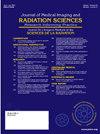Automation of medical imaging business reporting workflows in Ontario for quantitative and qualitative process improvement
IF 1.3
Q3 RADIOLOGY, NUCLEAR MEDICINE & MEDICAL IMAGING
Journal of Medical Imaging and Radiation Sciences
Pub Date : 2025-04-02
DOI:10.1016/j.jmir.2025.101891
引用次数: 0
Abstract
Introduction/background
Medical imaging facilities in Ontario often rely on cyclical reporting workflows to submit system data for provincial funding and performance monitoring. These workflows often involve repetitive and manual steps to collect, process, model and circulate data. Workflow automation was applied at the business level to minimize the time and effort required to process key system metrics such as wait time cases and scanner fleet activity for regulatory reporting of utilization and financial workstreams. The time saved from workflow automation can be shifted to focus on higher-value innovation-based or patient-centred work to improve healthcare delivery within Ontario medical imaging and diagnostic systems. Efficiency and user experience improvements gained from workflow automation are realized directly by the report analyst. Subsequent improvements to report data quality are translated downstream to the clinical, clerical and operational stakeholders who use these reports to inform operational decision making. Workflow automation goals can be identified by the stakeholders who interact with workflows and workflow outputs. The workflow automations and evaluations outlined in this paper were completed by the report author and reflect the author's individual experience.
Methods
A 2-phased approach was applied to optimize in-scope workflows to consider time saved and improvements to the user experience through automation. Efficiency and user experience improvements were quantified by segmenting workflow processes into sub processes. Output accuracy, time savings and user experience improvements were measured at various checkpoints. A framework consisting of technical and documentation-based deliverables was developed to define automation design and solution impact across each workflow to 1) educate multidisciplinary stakeholders on process changes and automation design 2) validate solution accuracy and 3) support ongoing process change management.
Results
Automations were developed across 4 optimized workstreams to facilitate data cleaning, verification, consolidation and modelling. Across all workstreams a total of about 2 working days of time was saved in parallel with design improvements such as reductions in data entry errors, visual inspection, repetition and screen crowding. These automations optimized key medical imaging workstreams such as managing diagnostic imaging wait time cases, reporting scanner operating hours and fleet utilization.
Discussion/Conclusion
It was critical to ensure automated outputs remained familiar and accessible to all stakeholders to support effective engagement within medical imaging settings. This strategy was applied by considering the need to preserve legacy process strengths to support various clinical, operational and clerical stakeholders in engaging with workflow outputs in a familiar and accessible way. Challenges with workflow automation emphasized that automations within healthcare environments must be implemented with caution to ensure solution outputs are interpretable and meaningful to multidisciplinary stakeholders. This paper encourages workflow subject matter experts to asses repetition present in medical imaging business reporting workflows and explore digital solutions that minimize time spent away from innovation-based work to improve system performance.
自动化医疗成像业务报告工作流程在安大略省的定量和定性的过程改进
简介/背景安大略省的医学成像设施通常依赖于周期性报告工作流程来提交系统数据,以供省资助和绩效监测。这些工作流通常涉及重复性的手动步骤,以收集、处理、建模和循环数据。在业务级别应用工作流自动化,以最大限度地减少处理关键系统指标所需的时间和精力,例如等待时间案例和用于利用率和财务工作流的监管报告的扫描机队活动。工作流程自动化节省的时间可以转移到基于更高价值的创新或以患者为中心的工作上,以改善安大略省医疗成像和诊断系统内的医疗保健服务。从工作流自动化中获得的效率和用户体验的改进是由报表分析师直接实现的。报告数据质量的后续改进将传递给下游的临床、文书和业务利益相关者,他们使用这些报告为业务决策提供信息。工作流自动化目标可以由与工作流和工作流输出交互的涉众确定。本文中概述的工作流自动化和评估是由报告作者完成的,反映了作者的个人经验。方法采用两阶段方法优化范围内工作流程,考虑通过自动化节省的时间和改善的用户体验。效率和用户体验的改进是通过将工作流过程分割成子过程来量化的。在不同的检查点测量输出精度、时间节省和用户体验改进。开发了一个由技术和基于文档的可交付成果组成的框架,以定义自动化设计和解决方案对每个工作流的影响,以1)教育多学科涉众过程变更和自动化设计,2)验证解决方案的准确性,3)支持正在进行的过程变更管理。结果在4个优化的工作流中开发了自动化,以促进数据清理、验证、整合和建模。在所有工作流程中,总共节省了大约2个工作日的时间,同时改进了设计,如减少了数据输入错误、视觉检查、重复和屏幕拥挤。这些自动化优化了关键的医疗成像工作流程,如管理诊断成像等待时间案例、报告扫描仪运行时间和机队利用率。讨论/结论确保所有利益相关者都熟悉和可访问自动化输出,以支持医学成像环境中的有效参与,这一点至关重要。通过考虑保留遗留流程优势的需要来应用此策略,以支持各种临床、操作和文书涉众以熟悉和可访问的方式参与工作流输出。工作流自动化的挑战强调,必须谨慎地实现医疗保健环境中的自动化,以确保解决方案输出对多学科涉众是可解释的和有意义的。本文鼓励工作流主题专家评估医学成像业务报告工作流中存在的重复,并探索数字解决方案,最大限度地减少从基于创新的工作中花费的时间,以提高系统性能。
本文章由计算机程序翻译,如有差异,请以英文原文为准。
求助全文
约1分钟内获得全文
求助全文
来源期刊

Journal of Medical Imaging and Radiation Sciences
RADIOLOGY, NUCLEAR MEDICINE & MEDICAL IMAGING-
CiteScore
2.30
自引率
11.10%
发文量
231
审稿时长
53 days
期刊介绍:
Journal of Medical Imaging and Radiation Sciences is the official peer-reviewed journal of the Canadian Association of Medical Radiation Technologists. This journal is published four times a year and is circulated to approximately 11,000 medical radiation technologists, libraries and radiology departments throughout Canada, the United States and overseas. The Journal publishes articles on recent research, new technology and techniques, professional practices, technologists viewpoints as well as relevant book reviews.
 求助内容:
求助内容: 应助结果提醒方式:
应助结果提醒方式:


